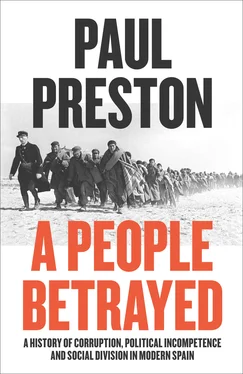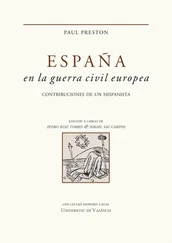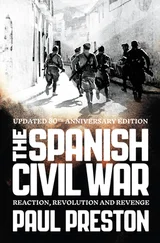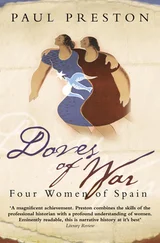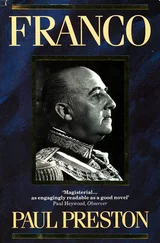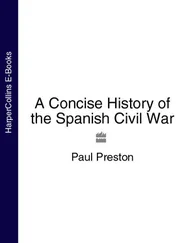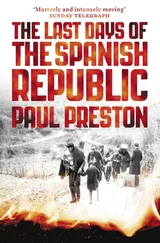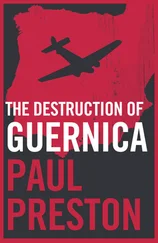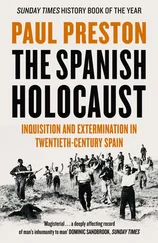For all that Spanish intellectuals resented the belittling of their country by foreign writers, there were those who did it themselves, albeit in a different way. There was a substantial literature that lamented Spain’s loss of empire, uninterrupted military failures, deep-rooted political instability and economic backwardness.27 In November 1930, the intellectual Manuel Azaña, a future prime minister and president of the Second Republic, echoed Richard Ford’s judgement. He described the political system as functioning with two mechanisms, despotic authoritarianism and corruption. The great practitioner of the first was the reactionary General Ramón María Narváez, who was seven times Prime Minister between 1844 and 1868. He was notorious for remarking on his deathbed: ‘I have no enemies. I have shot them all.’ The wizard of electoral falsification was Luis José Sartorius, who, in the 1840s and 1850s, according to Azaña, ‘elevated political corruption into a system and became a master in the art of fabricating parliamentary majorities’. During their collaboration, in Azaña’s view, ‘the most illustrious elements of Spanish society applied themselves to squeezing profit out of politics’.28
The civil war of 1936–9 represented the most determined effort by reactionary elements in Spanish politics to crush any reforming project which might threaten their privileged position. The enduring dominance of reactionary forces reflected the continued power of the old landed oligarchy and the parallel weakness of the progressive bourgeoisie. The painfully slow and uneven development of industrial capitalism in Spain accounted for the existence of a numerically small and politically feeble commercial and manufacturing class. Spain did not experience a classic bourgeois revolution in which the structures of the ancien régime were broken. The power of the monarchy, the landed nobility and the Church remained more or less intact well into the twentieth century. Unlike Britain and France, nineteenth-century Spain did not see the establishment of an incipiently democratic polity with the flexibility to absorb new forces and to adjust to major social change. The legal basis for capitalism was established albeit without there being a political revolution and with the survival of elements of feudalism. Accordingly, with the obvious difference that its industrial capitalism was extremely feeble, Spain followed the political pattern established by Prussia.
Within this authoritarian model, until the 1950s capitalism in Spain was predominantly agrarian except for Asturias, Catalonia and the Basque Country in the north. Spanish agriculture is immensely variegated in terms of climate, crops and land-holding systems. There have long existed areas of commercially successful small and medium-sized farming operations, especially in the lush, wet hills and valleys of those northern regions which also experienced industrialization. However, throughout the nineteenth century and for the first half of the twentieth, the most politically influential sectors were, broadly speaking, the large landowners. In the main, the latifundios , the great estates, are concentrated in the arid central and southern regions of New Castile, Extremadura and Andalusia, although there are also substantial latifundios to be found scattered throughout parts of Old Castile and particularly in Salamanca. The political monopoly of the landed oligarchy saw occasional tentative challenges by the emasculated industrial and mercantile classes. However, reliant on the repressive power of the oligarchy, their efforts met with little success. Until well into the 1950s, the urban haute bourgeoisie was obliged to play the role of junior partner in a working coalition with the great latifundistas . Despite sporadic industrialization and a steady growth in the national importance of the political representatives of the northern industrialists, power remained squarely in the hands of the landowners.
In Spain, industrialization and political modernization did not go hand in hand. In the first half of the nineteenth century, the progressive impulses, both political and economic, of the Spanish bourgeoisie were diverted. The desamortización (disentailment) saw the expropriation of great swathes of Church and municipal lands and the lifting of mortmain, feudal restrictions on land transactions. The process had begun piecemeal in the late eighteenth century but was speeded up in 1836 by the Liberal Prime Minister Juan de Dios Álvarez Mendizábal. He had changed his name from Álvarez Méndez to hide the fact that he came from a Jewish family that sold second-hand clothes in Cadiz. He was a self-made businessman who had acquired a reputation as a financial genius as a result of having made a fortune in London. He saw the expropriation, and sale, of the lands of religious orders as a way of resolving royal financial problems created by the Carlist Wars of the 1830s. Mendizábal believed that he was thereby laying the basis for the future prosperity of Spain by creating a self-sustaining smallholding peasantry, ‘a copious family of property owners’.29 However, in the interests of the crown, the confiscated properties were sold at auction in large blocks, which meant that they were far beyond the means of even existing smallholders. Moreover, the fact that the lots were sold well below their market price, and often on credit which could be obtained only by the wealthy, ensured that one of the consequences was the consolidation of great estates. The other was that the privatization of property brought into cultivation land that had previously been idle or poorly cultivated. However, this was not enough to meet the needs of a steadily growing population, especially in the south.30
In 1841, General Baldomero Espartero extended the expropriations to all Church properties. Huge tracts of entailed ecclesiastical and common lands were liberated to pay for the Liberal war effort. This process was intensified after 1855 by the Ley Pascual Madoz which opened the way to the acquisition of common lands by private individuals, often simply by a combination of legal subterfuge and strong-arm tactics. The landed aristocracy benefited because their lands were taken out of mortmain but not expropriated. Thus they could buy and sell land and rationalize their holdings. By 1875, three-quarters of land that forty years previously had belonged to the Church or municipalities was in private hands. This not only diminished any impetus towards industrialization but, by helping to expand the great estates, also created intense social hatreds in the south. The newly released land was bought up by the more efficient among existing landlords, and also by lawyers and members of the commercial and mercantile bourgeoisie who were attracted by its cheapness and social prestige. The latifundio system was consolidated and, unlike their inefficient predecessors, the new landlords were keen for a return on their investment and saw land as a productive asset to be exploited for maximum profit. Having said that, neither the old nor the new landowners were prepared to invest in new techniques. The judgement on the ‘general dilapidation’ made by Richard Ford in the 1840s would still be valid ninety years later: ‘The landed proprietor of the Peninsula is little better than a weed of the soil; he has never observed, nor scarcely permitted others to observe, the vast capabilities which might and ought to be called into action.’31 One obvious consequence was an increase in thefts of domestic animals and assaults on bakeries and other shops. That is not to say that all crimes of violence were responses to social deprivation. Many others were sexual and honour crimes.32
The capital of the merchants of the great seaports and of Madrid bankers was diverted away from industry and into land purchases both for speculative purposes and also because of the social prestige that came with it.33 Investment in land and widespread intermarriage between the urban bourgeoisie and the landed oligarchy weakened their commitment to reform. The weakness of the Spanish bourgeoisie as a potentially revolutionary class was exposed during the period from 1868 to 1873, which culminated in the chaos of the First Republic. Population growth in the middle of the century had increased pressure on the land. Unskilled labourers from country districts flocked to the towns and swelled the mob of unemployed who survived on the edges of society. This was especially the case in Barcelona, in large part because of the collapse of the wine industry as a result of the phylloxera crisis after 1880. Its population more than doubled between 1860, when it constituted an eighth of the Catalan total, and 1900, by which time it had swelled to more than a quarter. The living standards of the urban lower-middle class of teachers, officials and shopkeepers were almost as wretched as those of the unskilled labourers. One of the most explosive areas was the Catalan textile industry where the horrors of nascent capitalism – long hours, child labour, overcrowding in insanitary living conditions and starvation wages – produced acute social tensions and, soon, anarchist terrorism. When cotton supplies were choked off by the American Civil War in the 1860s, the consequent rise in unemployment was exacerbated by a depression in railway construction that saw the urban working class pushed to desperation. Until well into the twentieth century, Madrid governments, representing as they did agrarian interests, had little or no understanding of the problems of a growing and militant industrial proletariat in Catalonia. Consequently, the social problem was dealt with entirely as a public order issue. Of the eighty-six years between 1814 and 1900, for sixty of them Catalonia was under a state of exception, which effectively meant military rule. Moreover, a quarter of the nation’s military strength was stationed in Catalonia, a region containing approximately 10 per cent of the Spanish population. This was directed as much at rural Carlism as at urban anarchism.34
Читать дальше
